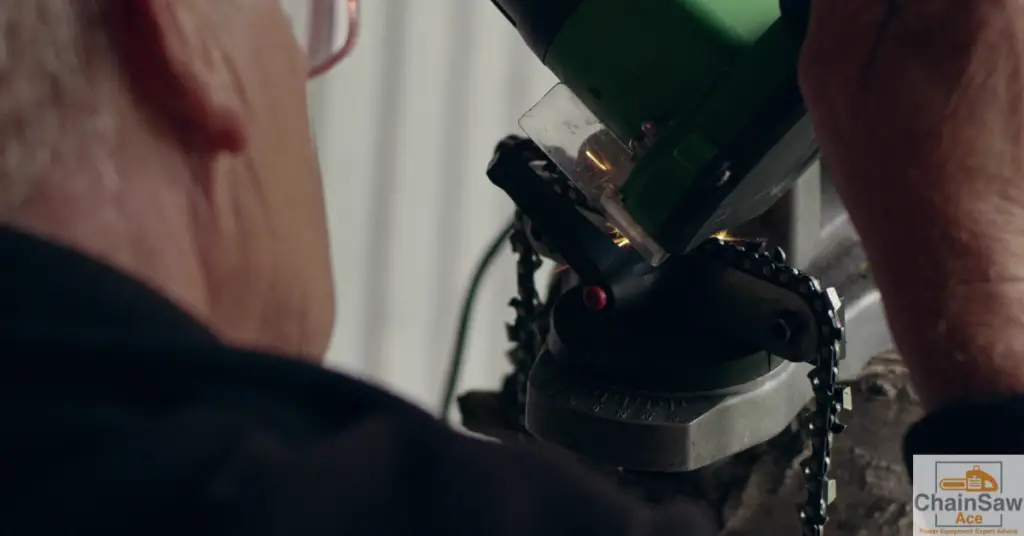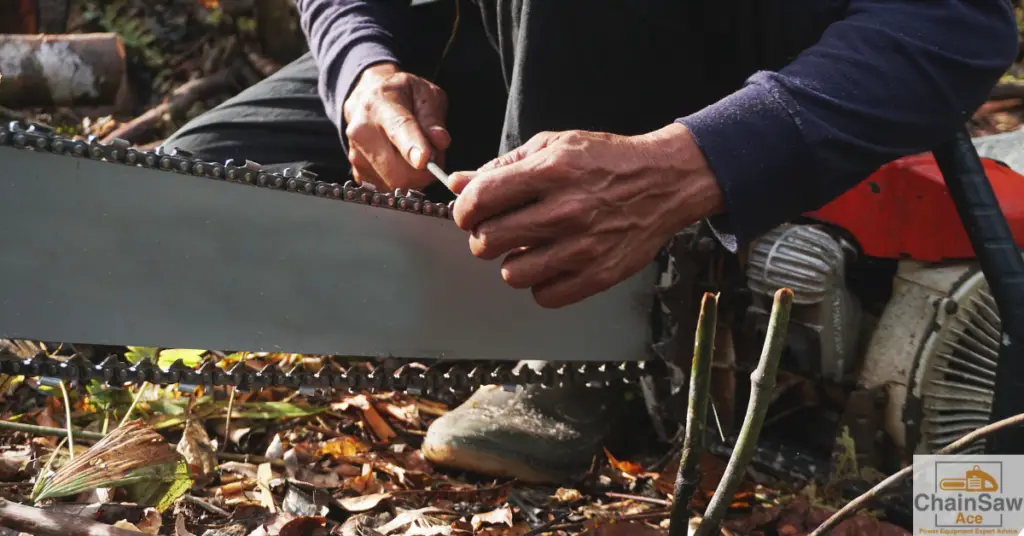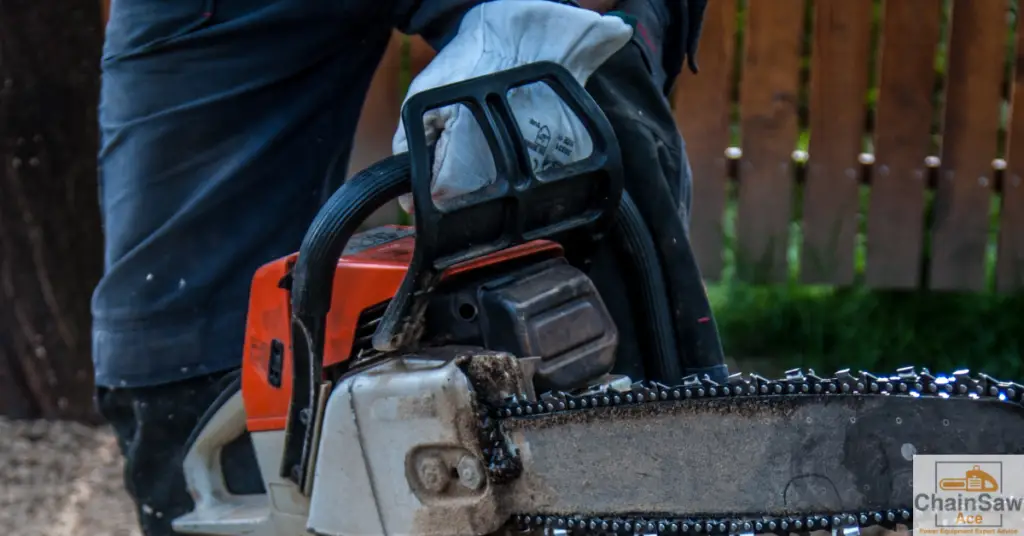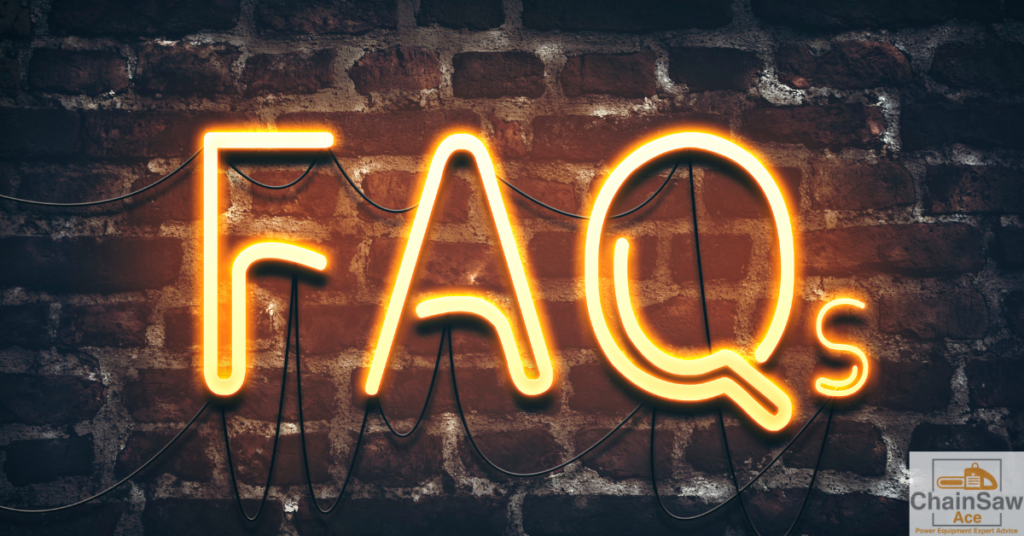
A sharp chainsaw chain is essential for the efficient and safe operation of your chainsaw. Not only does it reduce the risk of kickback and injury, but it also ensures clean and precise cuts.
Knowing the correct angle for sharpening your chainsaw chain is crucial for maintaining its performance.
In general, chainsaw chains are sharpened at a 30° angle. However, the recommended degree may vary depending on the cutting conditions and the type of wood.
For instance, full chisel chains require sharpening at a 25-35° angle, semi-chisel chains at a 30-35° angle, and low-profile chains at a 25-30° angle. Nevertheless, it’s crucial to always refer to the manufacturer’s guidelines for the most precise information.
- Types of Chainsaw Chains
- Manufacturer Recommendations
- Chain Pitch and Gauge
- Cutting Conditions
- Advantages of Electric Sharpeners
- Setting up the Electric Sharpener
- Sharpening Process
- What angle do you sharpen a chainsaw chain with a file?
- How do you know when to sharpen chainsaw chain?
- How often should I sharpen my chainsaw chain?
- Can a chainsaw chain be too sharp?
- How do you sharpen a chainsaw chain without a guide?
Types of Chainsaw Chains
There are several types of chainsaw chains, each with different characteristics that affect the sharpening angle. Let’s take a look at the three most common types:
Full Chisel Chain
Full chisel chains have square-cornered teeth, making them aggressive and fast cutting. They are ideal for hardwoods and large-diameter logs but require a higher level of maintenance due to their increased susceptibility to dulling and chipping.
Semi-Chisel Chain
Semi-chisel chains have rounded-corner teeth, making them less aggressive but more durable than full-chisel chains. They are suitable for both hardwoods and softwoods and are less sensitive to dirt and debris, requiring less frequent sharpening.
Low-Profile Chain
Low-profile chains are designed for casual or occasional use, such as trimming or pruning. They have small, rounded teeth that prioritize safety and low kickback over aggressive cutting performance.
Factors Affecting the Sharpening Angle

Several factors determine the appropriate sharpening angle for your chainsaw chain:
Manufacturer Recommendations
The first place to look for the correct sharpening angle is the manufacturer’s recommendations. Most chainsaw manufacturers provide specific angles for their products, which should be followed for optimal performance.
Chain Pitch and Gauge
The pitch and gauge of your chainsaw chain also play a role in determining the sharpening angle. A larger pitch may require a more aggressive angle, while a smaller pitch may need a more conservative approach.
Cutting Conditions
The type of wood and cutting conditions you encounter will also influence the sharpening angle. For example, cutting hardwoods or encountering a lot of dirt and debris may require a more aggressive angle to maintain cutting efficiency.
Using an Electric Chainsaw Sharpener

Electric chainsaw sharpeners offer a convenient and precise way to sharpen your chainsaw chain. They eliminate guesswork and ensure a consistent angle across all teeth.
Advantages of Electric Sharpeners
Some benefits of using an electric chainsaw sharpener include the following:
- Faster sharpening process
- Consistent results
- Reduced risk of over-sharpening or uneven sharpening
- Less physical effort required
Setting up the Electric Sharpener
Before sharpening your chainsaw chain, set up your electric sharpener according to the manufacturer’s instructions. This usually involves securing the sharpener to a workbench or table and adjusting the guide and grinding wheel to the desired angle.
Sharpening Process
Once your electric sharpener is set up, follow these steps to sharpen your chainsaw chain:
- Turn off your chainsaw and ensure it’s secure to prevent movement during the sharpening process.
- Place the chain in the sharpener’s guide, aligning the first tooth with the grinding wheel.
- Adjust the chain stop to ensure the tooth is properly positioned.
- Turn on the electric sharpener and gently lower the grinding wheel onto the tooth, applying light pressure for a few seconds.
- Repeat the process for each tooth, ensuring you maintain the same sharpening angle and pressure.
- After sharpening all the teeth on one side, adjust the guide and grinding wheel to the opposite angle and sharpen the teeth on the other side.
How to Determine the Proper Sharpening Angle

To determine the correct angle for sharpening your chainsaw chain, consider the following:
- Check the manufacturer’s recommendations for the specific angle.
- Identify the type of chain (full chisel, semi-chisel, or low-profile) to help guide your decision.
- Take into account the chain pitch, gauge, and cutting conditions.
Typically, chainsaw chains are sharpened at a 30-degree angle. However, the degree required may vary depending on the cutting conditions and the type of chain.
For instance, full chisel chains require sharpening at a 25-35-degree angle, semi-chisel chains at a 30-35-degree angle, and low-profile chains at a 25-30-degree angle. It’s essential always to consult the manufacturer’s guidelines for the most precise information.
Tips for Maintaining Your Chainsaw Chain

To extend the life of your chainsaw chain and ensure optimal performance, follow these maintenance tips:
- Regularly inspect your chain for wear and damage, such as chipped or broken teeth.
- Clean your chain after each use to remove dirt and debris that could dull the cutting edges.
- Lubricate your chain with the appropriate oil to minimize friction and wear.
- Adjust chain tension as needed to prevent slipping or binding.
- Store your chainsaw and chain properly to prevent rust and corrosion.
Conclusion
Knowing the correct angle to sharpen your chainsaw chain is essential for maintaining its performance and ensuring clean, precise cuts. By using an electric sharpener and following the manufacturer’s recommendations, you can achieve consistent, professional results every time. Regular maintenance and proper sharpening will extend the life of your chainsaw chain and help you tackle any cutting task with ease.
FAQs

What angle do you sharpen a chainsaw chain with a file?
The sharpening angle for a chainsaw chain with a file is generally between 25° and 35°. However, it’s essential to consult the manufacturer’s guidelines for the specific angle recommended for your chain type and cutter design.
How do you know when to sharpen chainsaw chain?
Signs that your chainsaw chain needs sharpening include reduced cutting performance, increased difficulty cutting through wood, and excessive vibration during operation. Additionally, if the chain produces fine sawdust instead of coarse wood chips, it’s likely time for sharpening.
How often should I sharpen my chainsaw chain?
The frequency of sharpening your chainsaw chain depends on factors such as usage and the type of material being cut. For regular use, it’s a good idea to sharpen the chain every time you refill the chainsaw’s fuel tank or after several hours of operation. However, cutting hardwood or encountering dirt and debris may require you to sharpen the chain more frequently.
Can a chainsaw chain be too sharp?
While it’s essential to maintain a sharp chainsaw chain, over-sharpening can cause excessive wear on the cutter teeth and decrease the chain’s lifespan. Always follow the manufacturer’s guidelines for sharpening angles and remove only the necessary amount of material from each tooth.
How do you sharpen a chainsaw chain without a guide?
To sharpen a chainsaw chain without a guide, you’ll need a round file that matches the chain’s cutter diameter and a flat file to maintain the depth gauge. Here’s a brief overview of the process:
- Secure the chainsaw chain to prevent movement during sharpening.
- Hold the round file at the recommended sharpening angle, typically between 25° and 35°.
- File each cutter tooth using smooth, even strokes, applying consistent pressure. Count the number of strokes to maintain uniformity across all teeth.
- Rotate the chainsaw as needed to access all cutter teeth.
- After sharpening all teeth, use a flat file to adjust the depth gauge according to the manufacturer’s guidelines.
Keep in mind that sharpening a chainsaw chain without a guide can be more challenging and may result in uneven sharpening. Using a guide or an electric sharpener can yield more consistent results and extend the life of your chain.
